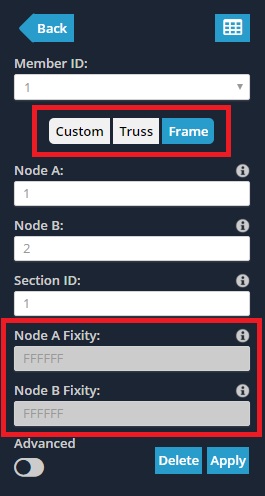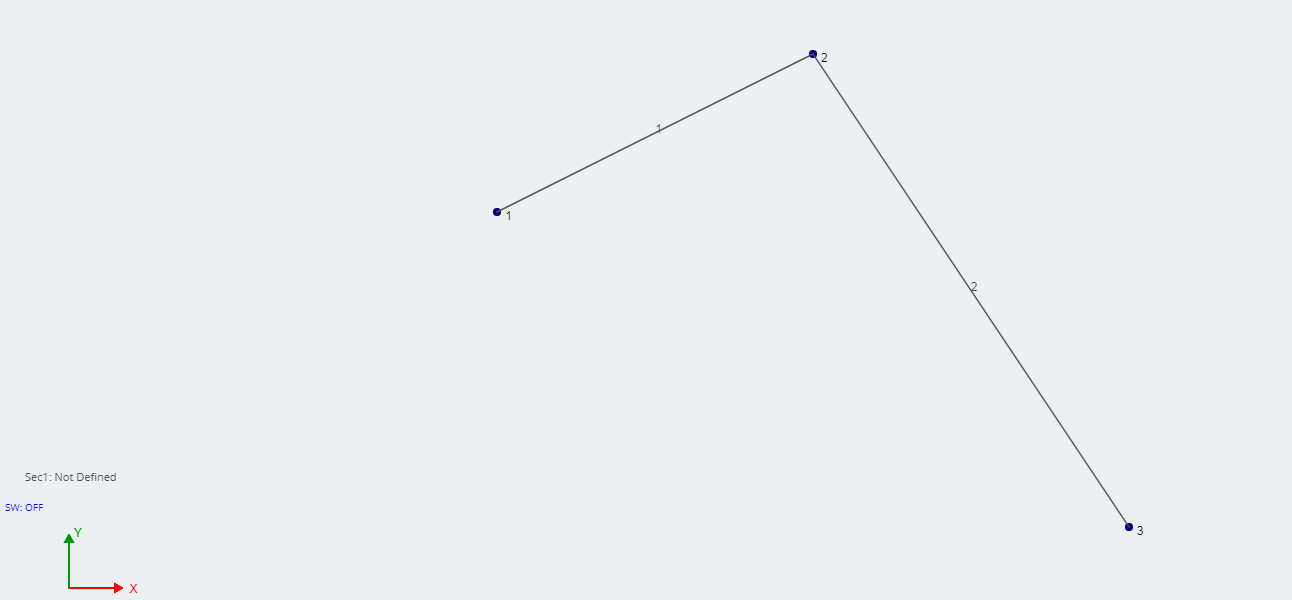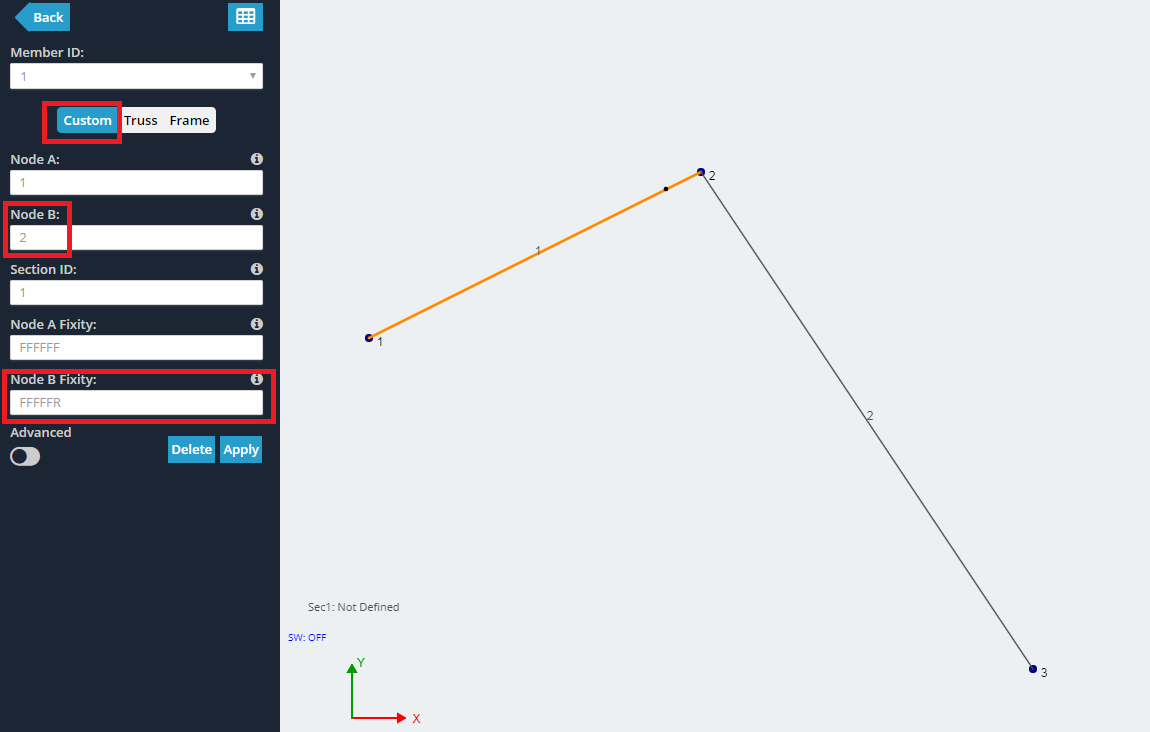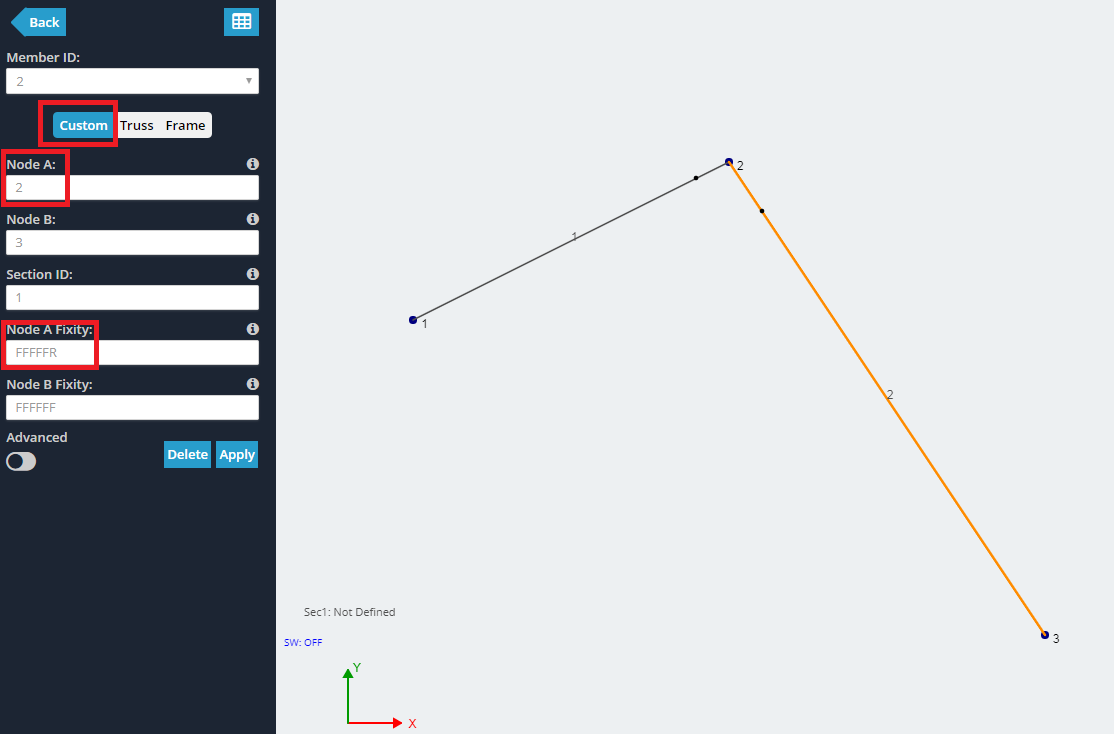What Member Fixities mean and how they are identified in Structural 3D
Member End Fixities control how members are connected to each other or to the end nodes and include conditions such as a fixed, καρφιτσωμένο, ή σύνδεση ελατηρίου.
Αυτή η ρύθμιση μέλους ελέγχει τον τρόπο με τον οποίο το άκρο του μέλους συνδέεται με τον τερματικό του κόμβο, και επομένως πώς συνδέονται τα μέλη μεταξύ τους. Ένας κωδικός σταθερότητας είναι α 6 κωδικός χαρακτήρα που καθορίζει το 6 degrees of freedom for translation and rotation.
Member-end fixity codes accept ‘F’ (Σταθερός) and ‘R’ (Κυκλοφόρησε) αξίες. This code refers to the member end’s connection to its end node for each of the 6 degrees of freedom in the following order:
- Local x-axis Translation
- Local y-axis Translation
- Local z-axis Translation
- Local x-axis Rotation
- Local y-axis Rotation
- Local z-axis Rotation
ΣΗΜΕΙΩΣΗ: Member-end fixities are with respect to the member’s local axis system rather than the global axis system.

Πλαίσιο members have a fully fixed, rigid connection specified by a fixity code of ‘FFFFFF’.
Δένω members have a hinged connection denoted by a code of ‘FFFFRR’.
To specify custom values, ensure that the Εθιμο button is selected. This enables the end fixity fields to be edited.
How to tell Member End Fixity while looking in the model space
When modeling with members, it is convenient to know the members’ end fixity without having to click on each member individually. Από προεπιλογή, when members are modeled they have fully fixed, ή Πλαίσιο, end fixities (FFFFFF). The member looks like a single line between nodes:

When any of the degrees of freedom are released, the member will have a small dot near the end of the member (as shown below circled in red). Για παράδειγμα, for members with pinned, ή Δένω, end fixities (FFFRRR), the member would look like this:

Further Explanation
For more information on member fixities, SkyCiv has a technical article (including a video) στο blog μας, εστιάζοντας how to model member fixities:
Παράδειγμα: How to model pin connections or hinges
Σε αυτό το παράδειγμα, θα δημιουργήσουμε μια απλή σύνδεση pin, όπως μια άρθρωση. Ξεκινήστε δημιουργώντας 3 κόμβους και ένωση τους με 2 μέλη. Σε αυτό το παράδειγμα κόμβου, 2 θα είναι η άρθρωση.



Περισσότερες πληροφορίες
Για περισσότερες πληροφορίες, SkyCiv has a further explanation on how to model a hinge, using Structural Analysis Software.

